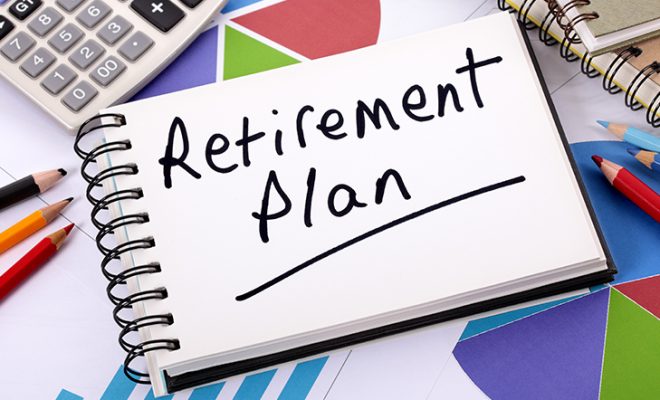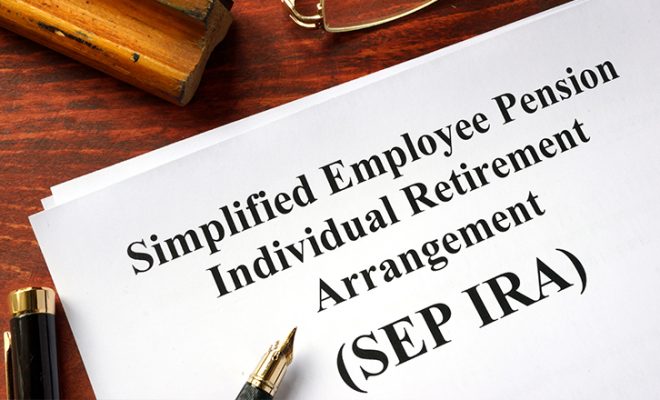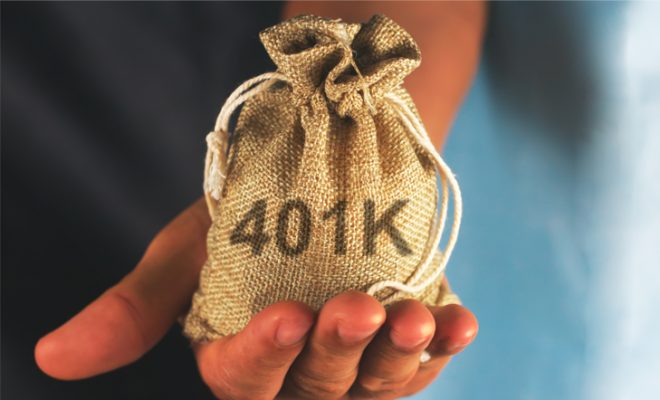What is Sequence of Returns Risk and How to Protect Your Retirement

Investing comes with its fair share of risks. You have probably heard about the usual suspects, such as market risk, inflation risk, credit risk, and liquidity risk. At times, managing these risks in your investments can feel like playing a difficult video game where you are constantly dodging hazards just to keep moving forward. But the list of risks does not end there. There is a hidden risk that most people do not hear about until it is too late, which is the sequence of returns risk.
You might have been told that time heals all wounds in investing. Staying invested for the long term is a common piece of advice. And yes, this advice generally works. But what if you are near retirement or are already retired and do not have the luxury of time anymore? That is exactly when the sequence of returns risk can strike, and it can hit your retirement portfolio at the worst possible moment.
But here is the good news – you can protect yourself with smart financial planning in retirement and the right strategies. Let’s break down the sequence of returns risk, so you know exactly how to shield your hard-earned savings from this hidden threat.
What is the sequence of return risk?
In simple terms, the sequence of returns risk is the risk of getting poor investment returns early in retirement or just before you retire. When you are still working, market dips are not always a big deal. You can ride them out because you are not relying on that money to live. You already have a salary or possibly other income as your primary source. You are also still contributing to your investments, so you are buying more shares when prices are low. But once you retire, you stop contributing, and you start withdrawing money to cover your expenses. If the market crashes early in your retirement, you may be forced to sell your investments at a loss. You will also be withdrawing from a portfolio that has already taken a hit and has a lower potential to recover even when the market eventually bounces back.
Now, imagine this:
You retire, and the first thing you want to do is tick some big items off your bucket list. Maybe you want to buy a home and move to a new city. You may even want to help a child with something or simply fulfill your lifelong dream of traveling the world. While there is nothing wrong with having these ambitions, there may be some risks associated with them. Making large withdrawals early on, especially during a market downturn, can drastically reduce your portfolio’s ability to grow back. And when your base shrinks, even if you earn good returns later, the portfolio will likely not do as much to help you recover.
When you are putting more weight on a sinking ship, things are likely to go south. The reality of retirement is that you are no longer putting fresh money into the market. There will be no salary bump in the future or a bonus check arriving around Christmas. You are done earning, and that is perfectly okay. But if your portfolio takes a nosedive early on in retirement and you are pulling money from it at the same time, you are setting yourself up for a double whammy.
The scary part about sequence risk is that you will not really know it is coming until it hits. You cannot predict precisely when the market will go up or down. That is why planning for it with the right retirement income strategies is crucial. Here are some things that can help:
1. Diversify your retirement investment portfolio so your entire nest egg does not take a hit at once
Diversification is your safety net in retirement. It helps you protect your savings by spreading risk across various investments, so a bad phase of the market does not bring down your entire portfolio.
Why does diversification matter more than ever in retirement?
When you retire, your investment goals change. You are not just looking for growth anymore but also stability and preservation of capital. Diversification becomes even more critical during this phase to ensure that your portfolio is able to withstand market ups and downs without jeopardizing your monthly withdrawals.
- Diversifying across asset classes like stocks, bonds, and cash equivalents is one of the most basic strategies. Stocks are great for long-term growth, but they can be volatile. Bonds, on the other hand, can be more stable and offer regular income.
- Do not forget tax diversification. If all your money is in traditional retirement accounts, like a traditional Individual Retirement Account (IRA) or 401(k), you will have to pay income tax on every penny you withdraw. This can hurt your withdrawal power and deplete your savings faster than expected. You will also face Required Minimum Distributions (RMDs), whether you need the money or not. These usually start around the age of 73. If the market is down, you might be forced to withdraw when your investments are worth less. To avoid this, you can consider adding Roth accounts to your retirement plan. Roth IRAs and Roth 401(k)s are funded with after-tax dollars, so your withdrawals are tax-free in retirement. They also do not have RMDs, so you are not forced to liquidate your investments during a downturn. Diversification across traditional and Roth accounts is one of the most helpful tax strategies for retirees. Therefore, ensure that you implement this policy.
Having said that, there is no uniform approach to diversification. Your ideal mix depends on several factors, such as your risk tolerance, retirement timeline, and withdrawal needs. So, follow a customized diversification strategy. If you are not sure where to start, talk to a financial advisor. They can help you run an assessment of your portfolio to see how it might perform in different market scenarios. They can also help you identify which asset classes might offer more stability as you transition into retirement.
2. Create a retirement bucket strategy
The retirement bucket strategy helps you organize your money based on when you will need it. The bucket strategy divides your savings into three buckets – short-term, mid-term, and long-term. You are supposed to withdraw your money as per these buckets, not before. Here’s how these buckets are categorized:
- Bucket 1: Short-term needs that you need to cover within the first 0 to 3 years of retirement
This bucket comprises cash that you will need immediately, such as for your daily expenses like groceries, gas, rent, utilities, and the like. This money should be easily accessible, such as in a savings account, but a high-yield one. This way, if the market takes a dip, you do not have to sell your investments at a loss at the very beginning of your retirement. You can use this money to stay afloat and give your portfolio time to recover in the meantime.
- Bucket 2: Mid-term needs that may surface in the next 3 to 7 years of retirement
Once the first bucket starts running low, you can start using the second bucket. This bucket includes slightly higher-yield but low-risk investments that are not too volatile. You could consider options like laddered Certificates of Deposit (CDs), bonds, etc. These tools help grow your money without adding too much risk. So, these investments are still conservative but can offer growth than just keeping pure cash.
- Bucket 3: Long-term needs that will arise in the next 7 years or more
This is the bucket that you should not touch for at least 7 to 10 years. This money should be designed for growth. You can include blue-chip stocks, dividend stocks, and growth stocks in your portfolio. This investment mix can help you keep pace with inflation and ensure your money does not run out prematurely.
This bucket is meant for your long-term growth, so you can take on a bit more risk as you will be able to ride out market ups and downs and hopefully enjoy the higher returns that come with long-term investing. However, since there is some risk involved here, you must consult a financial advisor before you get started.
3. Adopt a dynamic withdrawal strategy so you can adjust based on market movements
There are a lot of retirement planning tips about keeping a steady withdrawal rate. You have probably heard of the 4% rule, that if you withdraw 4% of your retirement savings each year, adjusted for inflation, you can use your retirement nest egg for about 30 years. This is a simple rule that gives you a sense of structure. And for many, it can work. However, there is one hiccup – markets do not always follow rules. They are unpredictable. Some years will be great. Others might be downright awful. And if you are pulling money out of your portfolio at a fixed rate while your investments are struggling, you could end up draining your savings faster than you had planned.
Let’s walk through an example.
Say you retire with $1 million and decide to withdraw $40,000 annually. In your first year, the market drops 20%. Your $1 million portfolio shrinks to $800,000. Then, you withdraw your $40,000 for the year, which brings your balance down to $760,000. The following year, the market bounces back with a 10% gain. But even though the 10% gains sound like things are in your favor now, you need to understand that 10% of $760,000 is just $76,000, whereas if the market had grown 10% before your withdrawal, you would be earning much more. This is the harsh truth of the sequence of returns risk. Losses early in retirement can leave you with less money later on.
But you can avoid this trap with a dynamic withdrawal strategy. The dynamic withdrawal strategy is flexible. Instead of sticking to a set percentage, whether 4%, 6%, or anything else, you adjust your withdrawals based on how your portfolio is performing and what you actually need that year. If the market is strong, you can withdraw a little more. But if it has been a rough year, you can reduce your withdrawals. This approach keeps your retirement savings aligned with what is happening in the real world.
Another important aspect of a dynamic withdrawal strategy is recognizing that your portfolio should not be your only source of income. Social Security, pensions, rental income from real estate, or annuities can all supplement your withdrawals and ease pressure on your savings. For example, if you delay claiming Social Security benefits until age 70, your benefit can increase by up to 8% per year after the Full Retirement Age (FRA).
You should also consult a financial advisor to create a withdrawal plan that aligns with your specific needs. Some years, you might want to spend more than others. Your spending needs are not going to be the same every year, so your withdrawal strategy should never be rigid.
4. Maintain an emergency fund to avoid liquidating your investments at a loss
In most cases, an emergency fund comes in handy when you lose your job and have something to fall back on. However, even in retirement, your emergency fund remains just as important, if not more so.
Why? Because now, you are living off a limited pool of money.
Let’s say the market takes a downturn. If you need money at that exact moment and do not have an emergency fund, what do you do? You can withdraw from your portfolio anyway. But pulling money from your retirement account during a market dip will result in a loss. This, in turn, will also lead your future gains to be smaller when the market recovers, as explained in the example given above.
An emergency fund gives you an alternative. Instead of touching your investments during a rough patch, you can use your emergency fund. Then, once the market bounces back, you can replenish your emergency fund by making a planned withdrawal from your portfolio when it is healthier. And while you may think of emergencies as disasters, which they are, your emergency fund can cover anything that was not within your budget. If anything, it gives you more flexibility and makes retirement feel less stressful. One of the best uses of an emergency fund in retirement is its ability to provide timely support. If the market is down, your portfolio is likely to take a hit. You can give it time to recover and not pull more money out.
So, when the market is down, lean on your emergency fund. When things recover and your investments regain value, take a planned withdrawal to top it back up. This lets you keep your portfolio intact and growing instead of constantly reacting to short-term dips.
Why You Should Prepare for Sequence of Returns Risk
The sequence of returns risk is a real threat. While it may or may not impact you, depending on when you retire and how the markets behave during those early years, you do need to prepare for it. If things line up in your favor, you might never face it at all. But that’s the thing about financial planning in retirement. You need to be ready for the worst.
Even if you do not foresee this risk affecting you, it is worth speaking to a financial advisor to make sure your bases are covered. A quick conversation can save you from years of financial stress down the line. You can use the free advisor match tool to find a qualified professional who fits your needs, no matter what the market throws your way.
For further information on creating a suitable retirement plan for your unique financial requirements, visit Dash Investments or email me directly at dash@dashinvestments.com.
About Dash Investments
Dash Investments is privately owned by Jonathan Dash and is an independent investment advisory firm, managing private client accounts for individuals and families across America. As a Registered Investment Advisor (RIA) firm with the SEC, they are fiduciaries who put clients’ interests ahead of everything else.
Dash Investments offers a full range of investment advisory and financial services, which are tailored to each client’s unique needs providing institutional-caliber money management services that are based upon a solid, proven research approach. Additionally, each client receives comprehensive financial planning to ensure they are moving toward their financial goals.
CEO & Chief Investment Officer Jonathan Dash has been covered in major business publications such as Barron’s, The Wall Street Journal, and The New York Times as a leader in the investment industry with a track record of creating value for his firm’s clients.










